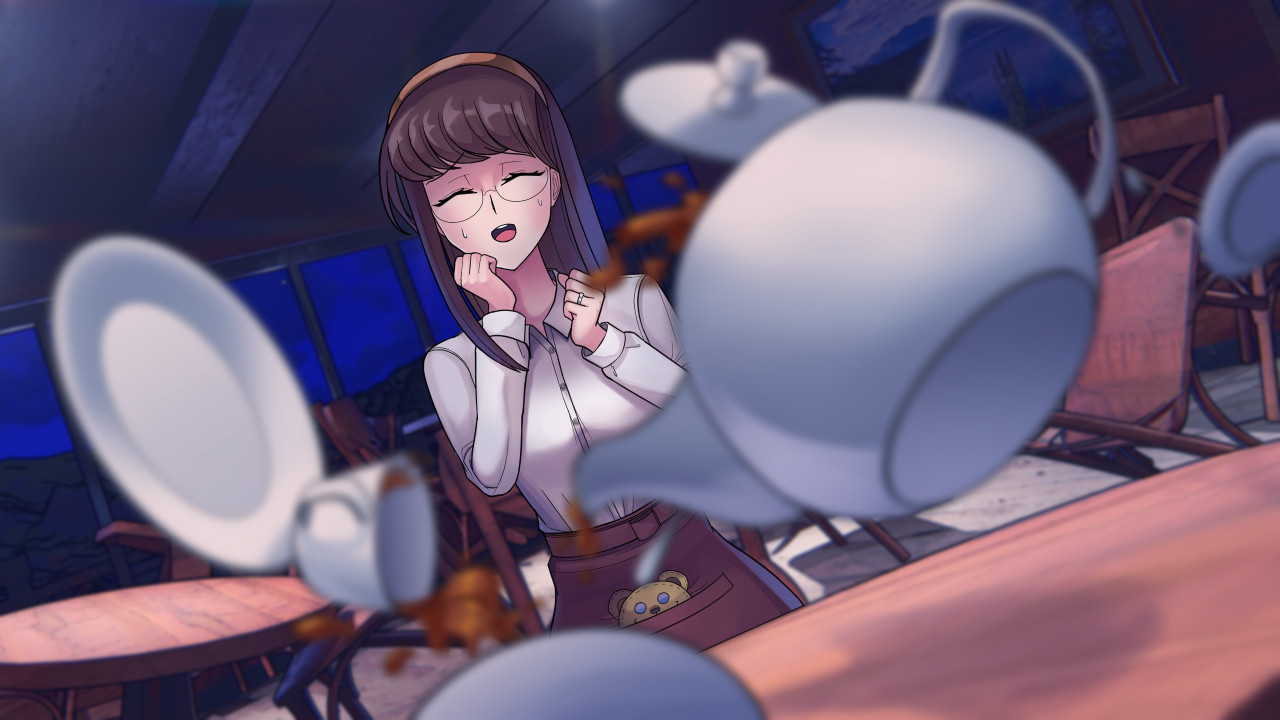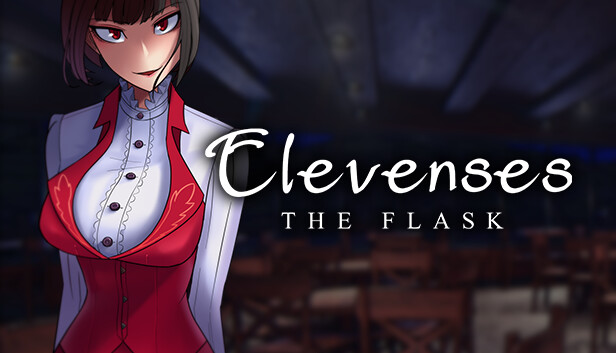Elevenses Mac OS
On the App Store Open the Mac App Store to buy and download apps. Elevenses! 4+ Can you make 11? M1 Mac owners should jump with joy as they have been complaining about a range of Bluetooth connection problems that seem to be plaguing Apple silicon Macs. Apple releases macOS Big Sur design kit with Sketch support for developers and designers. By Evan Selleck on January 22.

Elevenses/ɪˈlɛvənzɪz/ is a short break taken at around 11:00a.m. to consume a drink or snack. The names and details vary among countries.
Regional variations[edit]
Australia and New Zealand[edit]
In Australia and New Zealand, elevenses is known as 'morning tea' and occurs at approximately 10:30am. Many workplaces organize morning teas for staff to welcome new employees, for special occasions such as a birthday, or simply as a regular event. Food will sometimes be provided by the business, but often employees will be expected to bring food to share.[1][2]
Elevenses definition is - light refreshment (such as a snack) taken in the middle of the morning. The OS X 10.11 El Capitan upgrade is available only at the Mac App Store, which means if you have versions Snow Leopard 10.6.7, Mavericks, Yosemite, Lion, and Mountain Lion, the Mac App Store already exists on your computer. All you need to do is ensure the minimum OS requirement of 10.6.8 is installed before upgrading to the new system.
Belgium[edit]
In Belgian Dutch, this kind of snack is called a tienuurtje, literally a 'little (one of) 10 o'clock'.[3] A tienuurtje typically consists of one or more cookies or some piece of fruit and may be accompanied by fruit juice or chocolate milk. Many parents give their children a tienuurtje to eat during the mid-morning school break.A similar kind of snack for the afternoon break is called a vieruurtje, literally 'little (one of) 4 o'clock'.
Chile[edit]
In many Spanish-speaking cultures, elevenses is observed under the name la once (in Spanish, once means 'eleven'). However, in Chile it has shifted to the afternoon, sometimes replacing the traditional dinner.[4]
In the 2010–2011 National Food Consumption Survey, around 80% of the Chileans reported having once. This is due to once sometimes replacing the traditional dinner in Chile, which only 30% of the population reported having. Here traditional dinner means a proper meal with vegetables, meat, poultry and fish. La once resembles a light version of British High Tea.[5]
An alternative widespread, but unfounded, popular etymology for the word in Chile is that priests (in other versions, workers or women) used the phrase tomar las once (Spanish: 'drink the eleven') in reference to the eleven letters of the word Aguardiente to conceal the fact that they were drinking during the day.[5]
Colombia[edit]
In Colombia, it is common to have a snack named onces. It consists mainly of hot chocolate, coffee or tea with arepa, bread or crackers, usually taken around 5:00pm. In the morning, the snack consist of the same type of food but it is called medias nueves. It is served generally between 9 and 11 am.
Hungary[edit]
Elevenses in Hungarian is called Tíz-órai which translates to 'of the 10 o'clock', referring to 'the meal of the 10 o'clock'. This is a break between breakfast and lunch, when it is time for a light meal or snack. In schools the early lunch break is called a Tíz-órai break. Parallel to the word Elevenses, Tíz-órai is often called Tenses 'Tenzeez' by Hungarian-Americans and Hungarian-Britons.
Netherlands[edit]
In West Friesland country people had a similar meal called konkelstik (served at konkeltoid, the proper time for konkelen, a verb denoting 'making a visit').[6][7]
Poland[edit]
In Poland the drugie śniadanie (lit. 'second breakfast') is eaten in the midmorning. Rather than a heavy chunk of sausage or other meat, though, like the German second breakfast, Poles prefer a lighter, dessert-like pastry or sweet with a hot drink, more similar to the American 'coffee break'.[8]
Spain[edit]
In the Basque Country it is common to have a mid-morning snack consisting of high-protein food like eggs, bacon, or cured meats on bread, called hamarretako (literally '10 o'clock (snack)') or hamaiketako ('11 o'clock (snack)'). In Spain there is a break between the time range of 9:00 and 11:00 am, called almuerzo (in Latin American Spanish, this means lunch). In jobs of little physical effort, it can be a light lunch of a coffee, juice, infusion with some sweet or snack of almonds, nuts, or cookies. In jobs of great physical effort is usually a sandwich or a fried egg with ham and cheese.
United Kingdom[edit]
Elevenses, eaten at 11 as the name suggests, typically consists of tea or coffee, often with a few biscuits. Sometimes, toast or chocolate bars are eaten instead.[9]
United States[edit]
During the first decades of the 19th century, elevenses consisted of drinking whiskey.[10] In modern times, hourly workers take a break known as a coffee break, typically around 10:00am. Oftentimes, this is done in a break room, and small snacks may be eaten as well.
It is common for young school children to have a short snack break called morning snack. This is offered in the morning before lunch, usually between 9:00am and 11:00am. This snack is common in schools for children under the age of six. Older children are not offered snacks during school hours but rather are expected to eat only their midday meal, called lunch, during school.
A small population of Americans do take British elevenses.
Elevenses Mac Os Downloads
In popular culture[edit]
For elevenses, Winnie-the-Pooh preferred honey on bread with condensed milk. Paddington Bear often took elevenses at the antique shop on Portobello Road run by his friend Mr Gruber,[11] for which Paddington would buy buns and Mr Gruber would make cocoa (hot chocolate).

In the Middle-earth stories by J. R. R. Tolkien (The Lord of the Rings), a party is implied to be particularly lavish in that food was served 'continuously from elevenses until six-thirty'.[12]
See also[edit]
References[edit]
Elevenses Mac Os Catalina
- ^'The cheats' guide to morning teas'. Stuff.co.nz.
- ^'Like a boss: 10 terrific ideas for your office morning tea'. Food Daily. Archived from the original on 2016-09-15. Retrieved 2016-09-03.
- ^'Het Vlaams woordenboek: tienuurtje'. Het Vlaams woordenboek.
- ^Collier, Simon (2004). A History of Chile, 1808-2002. Cambridge University Press. ISBN0-521-53484-4.
- ^ abFredes, Cristóbal (November 15, 2014). 'El significado de la once'(SHTML). www.latercera.com. Retrieved June 24, 2017.
- ^Thijs, J. G. A. (1984). Taal ter sprake (in Dutch). Nijgh & Van Ditmar. p. 40. ISBN9789023655930. Retrieved 25 December 2012.
- ^ter Horst-Hoekstra, A. C. (1953). ''t Pistoal: Een Westfriese historie (1870-1878)'. De Speelwagen (in Dutch). 8 (10): 303–12.
- ^Preparing a Polish meal last visited 2020-04-17
- ^Harper, Timothy (1997). Passport United Kingdom: Your Pocket Guide to British Business, Customs and Etiquette. World Trade Press. ISBN1-885073-28-3.
- ^Pollan, Michael (12 October 2003). 'The (agri)cultural contradictions of obesity'. The New York Times Magazine. The way we live now.
- ^Bond, Michael (1997). Paddington abroad. London: Collins. p. 14. ISBN0007402570.
- ^Tolkien, J. R. R. (1954), The Fellowship of the Ring, The Lord of the Rings, Boston: Houghton Mifflin (published 1987), Chapter 1: A Long-Expected Party, ISBN0-395-08254-4
External links[edit]
- Beth Accomando (10 Dec 2013). 'Elevenses And Then Some: How To Prepare A Feast Fit For A Hobbit'. The Salt (NPR).
- Joshua Engel (6 Dec 2017). 'Is 'Elevenses' a Meal Anywhere, Or Did J.R.R. Tolkien Invent It?'. HuffPost.
| Look up elevenses or elevensies in Wiktionary, the free dictionary. |